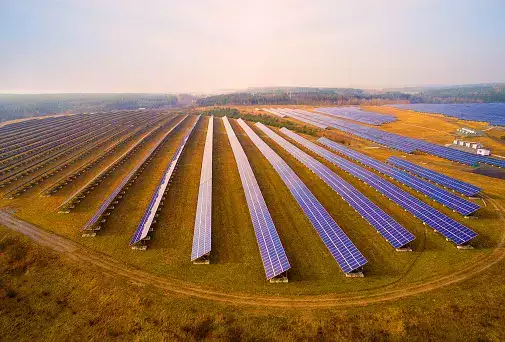MS Desk
—Share of coal/lignite in India’s total installed capacity fell below 50 per cent for the first time
— ~95 per cent of MNRE’s annual bidding trajectory target was met in FY24
—Over USD 2 billion in FDI flowed into non-conventional energy for the second year running
New Delhi: Renewable energy (RE) sources contributed to 71 per cent of the ~26GW of power generation capacity that India added in FY 2023-2024, according to the latest edition of the CEEW Centre for Energy Finance (CEEW-CEF) Market Handbook released today. The country’s total installed energy capacity has now reached 442 GW, of which ~144 GW (33 per cent) was RE, and ~47 GW (11 per cent) came from hydro. Consequently, the coal/lignite share in India’s total installed capacity tipped below the 50 per cent mark for the first time.
The CEEW-CEF Market Handbook also found that solar—grid-scale and rooftop—continued to dominate India’s RE capacity addition, accounting for ~15 GW (or 81 per cent of RE addition) in FY24. Wind capacity addition almost doubled and stood at 3.3 GW (vs 2.3 GW in FY23). Notably, for the first time since FY17, nuclear capacity (1.4 GW) was added in FY24.
In line with India’s ambitious renewable energy goals, RE auctions reached a record with ~41 GW of auctioned capacity in FY24, the report found. Further, in this financial year, eight auctions with energy storage components were concluded, indicating a growing shift towards innovative power procurement formats.
Gagan Sidhu, Director, CEEW-CEF, said, “The CEEW-CEF Market Handbook found that ~95 per cent of India’s targeted 50 GW annual RE bidding trajectory was met in FY24. Bids of 47.5 GW that were issued are approximately three times the RE capacity that has been added annually in recent years. Further, there is a clear tilt away from pure vanilla RE procurement. Innovative formats such as wind-solar hybrids, firm and dispatchable renewable energy (FDRE), and RE-plus-storage accounted for 37 per cent of the capacity auctioned. Going forward, we can expect this share to increase further as innovative formats accounted for 57 per cent of bids issued. The sharp fall in the drop of battery energy storage systems (BESS) tariffs augurs well in this regard, with FY24 witnessing a ~59 per cent drop in BESS tariffs, providing 2 hours of storage per day (compared to August 2022). India’s main challenge with RE now is the scale of financing. Specifically, how can it be ramped up 3x to finance bids of 47.5 GW that were issued? Unlocking the domestic bond market for corporate green bond issuances can be a catalyst to achieve this scale.”
The CEEW-CEF report also found that peak power demand (met) continued to rise in FY24, and reached a new high of 240 GW. This was due to factors such as a fast-growing economy and lower-than-expected rainfall in August 2023 and October 2023, above-normal temperatures in November 2023, and severe cold days during the winter months in North India. In electricity demand (met) terms, there was an uptick of ~8 per cent compared to FY23.
Riddhi Mukherjee, Research Analyst, CEEW-CEF, said, “To fulfil India’s ever-increasing electricity requirement, the Ministry of Power amended the Electricity (Late Payment Surcharge and Related Matters) Rules of 2022, mandating the sale of un-requisitioned surplus power on exchanges. This move is expected to provide higher supply-side liquidity and further the discovery of competitive prices on the power exchanges. Moving to RE, FY24 saw several policy moves to shift gears beyond utility-scale RE. For instance, PM Surya Ghar: Muft Bijli Yojana was introduced to increase rooftop solar installation in the residential segment, which could result in the addition of ~30 GW.”
On the green financing front, foreign direct investment (FDI) flows towards non-conventional energy exceeded USD 2 billion for the second consecutive year, according to the CEEW-CEF Market Handbook. Further, the Reserve Bank of India concluded four sovereign green bonds auctions of INR 20,000 crore (vs INR 16,000 crore in FY23), whose proceeds may be used to finance/refinance eligible green projects.




